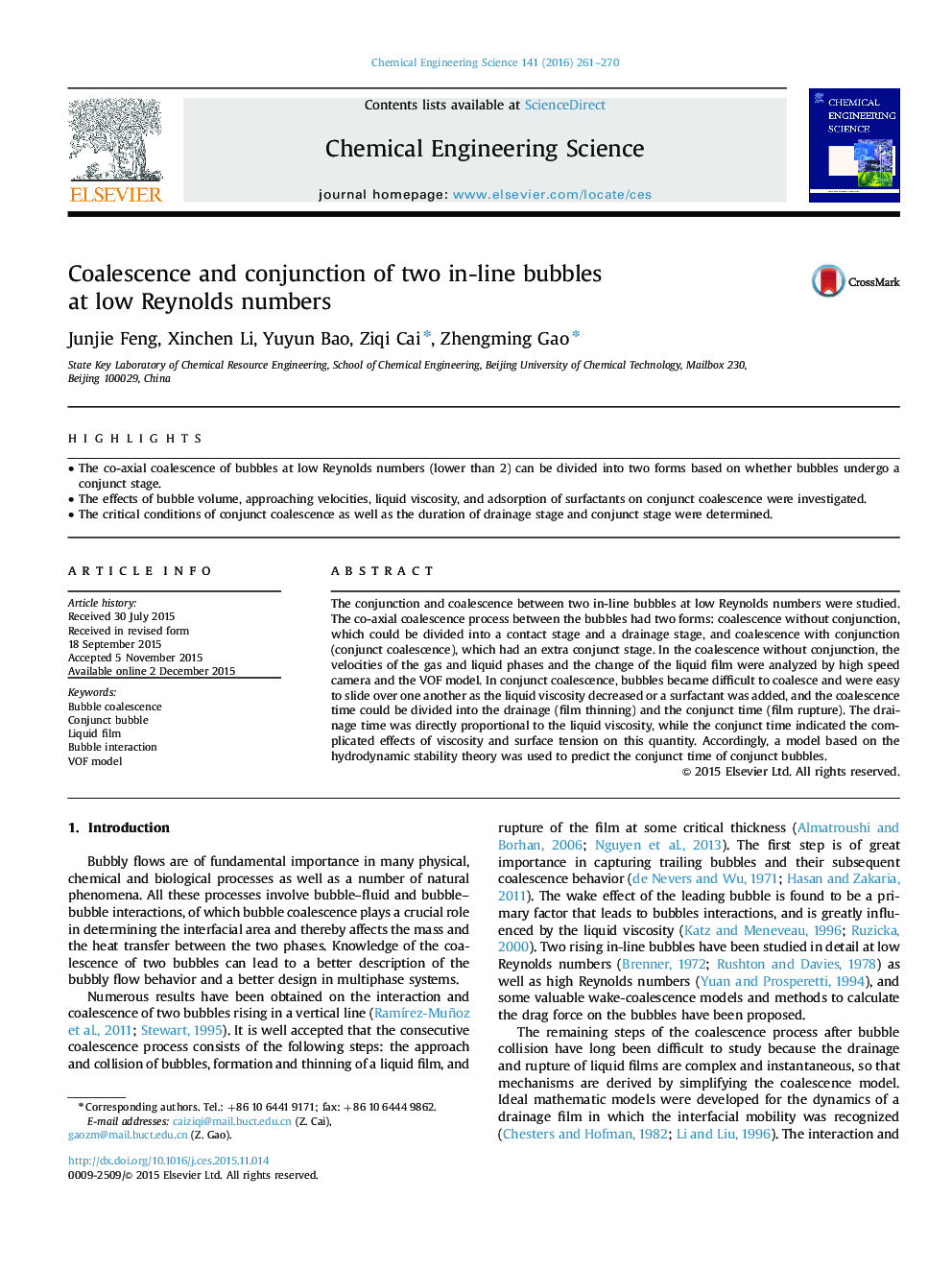| Article ID | Journal | Published Year | Pages | File Type |
|---|---|---|---|---|
| 154464 | Chemical Engineering Science | 2016 | 10 Pages |
•The co-axial coalescence of bubbles at low Reynolds numbers (lower than 2) can be divided into two forms based on whether bubbles undergo a conjunct stage.•The effects of bubble volume, approaching velocities, liquid viscosity, and adsorption of surfactants on conjunct coalescence were investigated.•The critical conditions of conjunct coalescence as well as the duration of drainage stage and conjunct stage were determined.
The conjunction and coalescence between two in-line bubbles at low Reynolds numbers were studied. The co-axial coalescence process between the bubbles had two forms: coalescence without conjunction, which could be divided into a contact stage and a drainage stage, and coalescence with conjunction (conjunct coalescence), which had an extra conjunct stage. In the coalescence without conjunction, the velocities of the gas and liquid phases and the change of the liquid film were analyzed by high speed camera and the VOF model. In conjunct coalescence, bubbles became difficult to coalesce and were easy to slide over one another as the liquid viscosity decreased or a surfactant was added, and the coalescence time could be divided into the drainage (film thinning) and the conjunct time (film rupture). The drainage time was directly proportional to the liquid viscosity, while the conjunct time indicated the complicated effects of viscosity and surface tension on this quantity. Accordingly, a model based on the hydrodynamic stability theory was used to predict the conjunct time of conjunct bubbles.
